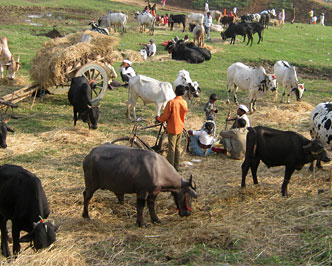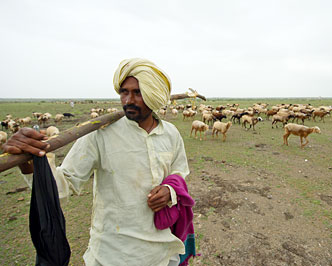-
- July 1, 2021
Dal Bhaat and the French Baby cookbook
What is the connection between dal-bhaat and a French Baby Cookbook?
A few years back, when I was attempting to learn French, my mother gifted me a book called Baby Cook Book written by David Rathgeber. As a struggling student of French, it was a fun lexicon of sorts of food and culinary terms. As a professional cook, I was intrigued and inspired that a male Michelin starred chef was writing cookbooks on baby food. From apricots to yogurt, the 77 recipes and ideas include all kinds of fruits and vegetables, eggs, nuts, dairy, fish and meats cooked as is or tossed in butter or olive oil, flavoured with herbs and spices, and served as purees, in pies or other such things. The recipes were inspired by what was found seasonally at the local markets and that got more complex based on the age of the child. It certainly seemed like a great way to introduce children to a variety of tastes, flavours, and textures and surely was good for the child’s health since dietary diversity is an indicator of nutritional adequacy.
Fast forward to this summer…
At Anthra, I had the opportunity to meet women belonging to the Katkari and Thakar communities who often work as landless farmers, in brick kilns or other such daily waged occupations. I was there to learn about their food habits and culture. They also shared about what they fed their babies and young children. The answer was unanimous- dal-bhaat(rice and lentils) seemed like a quotidian. I casually probed and asked if they occasionally fed their infants bananas or eggs but even the question seemed alien to them. Feeding time too I noticed, seemed unpleasant for both baby and caregiver- a painful chore rather than a pleasant interaction.
I empathised. Lives of these mothers are complex and tedious. According to the United Nations appointed Inter-Agency Task Force on Rural Women (2012), rural women spend more time in reproductive and household work than urban women and in India, between paid and unpaid work, rural women work almost 11 hours more per week than urban women and 12 hours more per week than urban men. Plus, as per the 2011 census of India women outnumber the men as marginal workers in cultivation, agricultural work and household industries, these women. Plagued with systemic issues like low literacy, poor health and development infrastructure, social marginalisation, these mothers are further overburdened with household chores that additionally include collecting firewood and water and have laborious and low paying work. Under such circumstances, considering things like nutritional adequacy, dietary diversity, responsive feeding, flavour and texture, etc. when feeding your children can be challenging.
But I shouldn’t be taken aback by what I have learned about child feeding in these specific communities. Data from the NFHS-5 reveals that complementary feeding practices in India overall are abysmal. A staggering 85% of Indian children between the ages of 6-23 months aren’t fed adequate diets i.e., their diets lack diversity and frequency of feeding is below recommended standard. Five States averaged at less than 10% and only one State touched a maximum of 30% when it came to meeting minimum adequate diets of children of the age group. The data is heart-breaking, and it is clear why child undernutrition ravages India; for children under the age of 5, the NFHS-5 reveals that 68.4% are anaemic, and the Global Hunger Index Report of 2020 states that 17.3% are wasted (the highest in the world), 34.7% are stunted (the average for Asia is 21.8%) and 3.7% is the mortality rate. There is a gap, more a ravine in this case when it comes to complementary feeding especially considering that a mere 15% of India’s children, in both rural and urban sectors receive adequate diets.
In India, dal-bhaat is omnipresent and shows up in various forms in every corner of the country. And its easy to see why; it’s easily accessible so much so that it is the quintessence of the PDS (a lifeline for low-income groups), it is affordable, it’s easy to prepare, safe to serve (as it colloquially considered “light food”) and in sheer terms of volume, a little always doubles after being cooked. Dal-bhaat holds a special place in the homes and hearths of people and is synonymous with comfort and healing. But in diets where meals are comprised solely of staple cereals and grains and that lack fruits, nuts, vegetables, and animal-sourced foods are low in energy, protein, iron, zinc, and other essential nutrients. Diets like these becomes concerning when they are being offered at such a critical stage of development in a person’s life.
It is clear and understandable why these communities lean largely on dal-bhaat to feed their infants but two things I observed bothered me. One, the diversity of foods that were available and accessible to the older children and adults of the household weren’t being extended to the infants of the family, and two, these communities seemed to be underutilising and, in some cases, almost ignoring their inherent knowledge related to native/indigenous food resources. I became aware of the latter only because I am now learning about native and wild foods and was excited to see some of these foods grow around these communities but some community members seemed passive to them.
Questions then arise.
How much of these complementary feeding practices are driven purely by the limited economic resources of such families? What are the other factors that hinder better feeding? How have their current practices impacted the health and wellbeing of their wards? How aware are these families about recommended complementary feeding practices? Who and/or what guides these caregivers when it comes to feeding their children? How much time can caregivers especially mothers afford to spare that will allow them to plan/prepare special meals for their infants and young? What value do native and wild foods hold for these communities? What role does backyard poultry play in the nutritional security of these families? What resources and assets do these communities have that can help offer their infants and toddlers a more diverse diet?
This brings me back to the Baby cookbook. Can Katkari and Thakar babies also enjoy 77 recipes and ideas under their circumstances? Can these children have diets that are not only diverse and nutritious but also culturally relevant and delicious? I dream of a future where they can! The answer I feel lies in connecting the dots between people and place, food and culture, individuals, communities, and institution and mobilising them together to create positive change. India’s future generations deserve and need better.
Kritika is associated with Anthra , would like to make the world a better place through “good food’ and is passionate about yoga and fish

- About Us
- Focus Areas
- Projects

- Overview
Active Projects
- Gender and Livestock in India: Toolkit for Evolving Research Strategies
- Livestock in Agroecology: an action research project to document and share different ways livestock contribute to promote agroecology
- IndiaZooRisk+: Using OneHealth approaches to understand and co-develop interventions for zoonotic diseases affecting forest communities in India
- Bringing Visibility and Recognition to Women Livestock Farmers and Pastoralists & Their Knowledge
Completed Projects
- Mapping Rangelands and Pastoral Landscapes
- Livestock Products and Livestock Markets in Dryland Areas of India: Emerging Changes and Challenges
- Mobile And Solar
- Maternal And Child Health In Mobile Pastoral Communities: Invisible And Unaccounted For
- Reduction Of Antibiotic Use In Dairy Farming
- Milk Produced Under Different Systems In India
- Enabling access to ‘good food’ through a rural-urban exchange
- Partnering through Knowledge Sharing: Helping Small Livestock holding Communities emerge from the Shadows
- School Under a Thousand Stars
- Publications
- Blog



